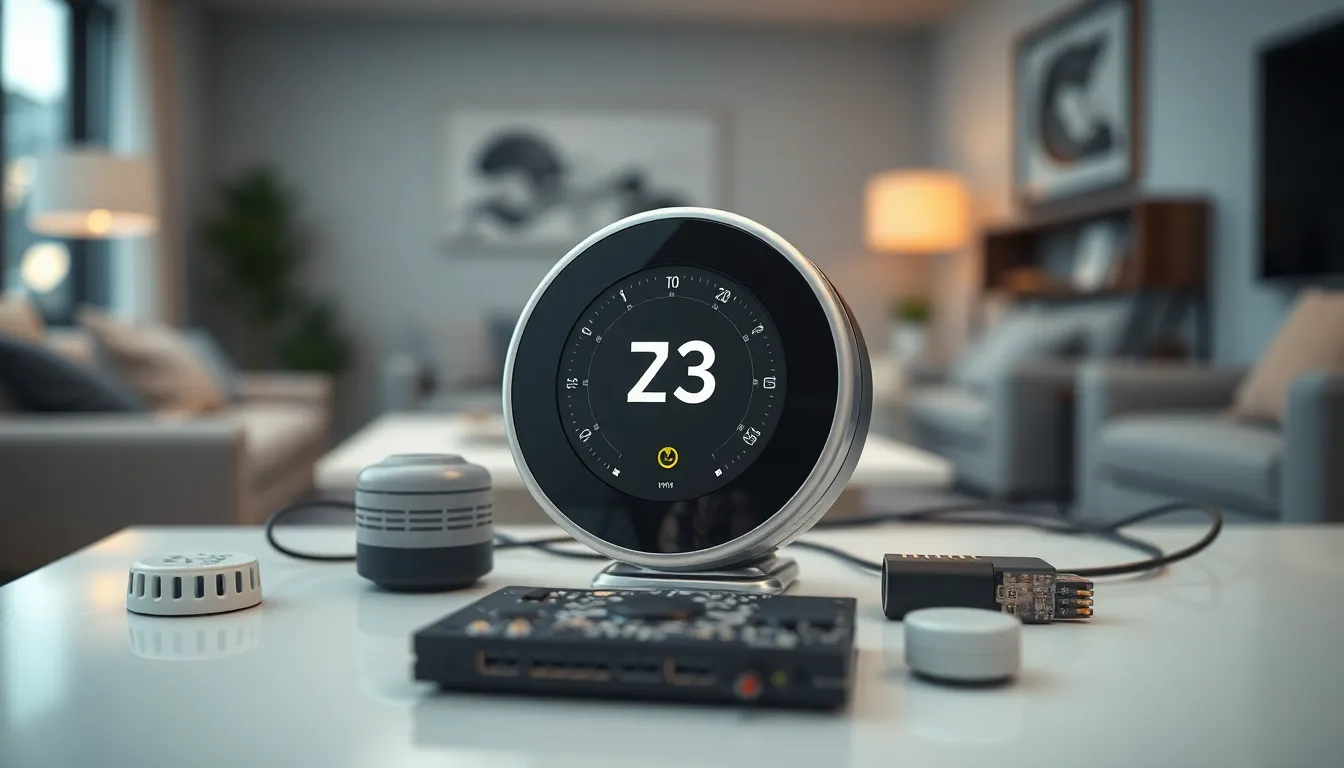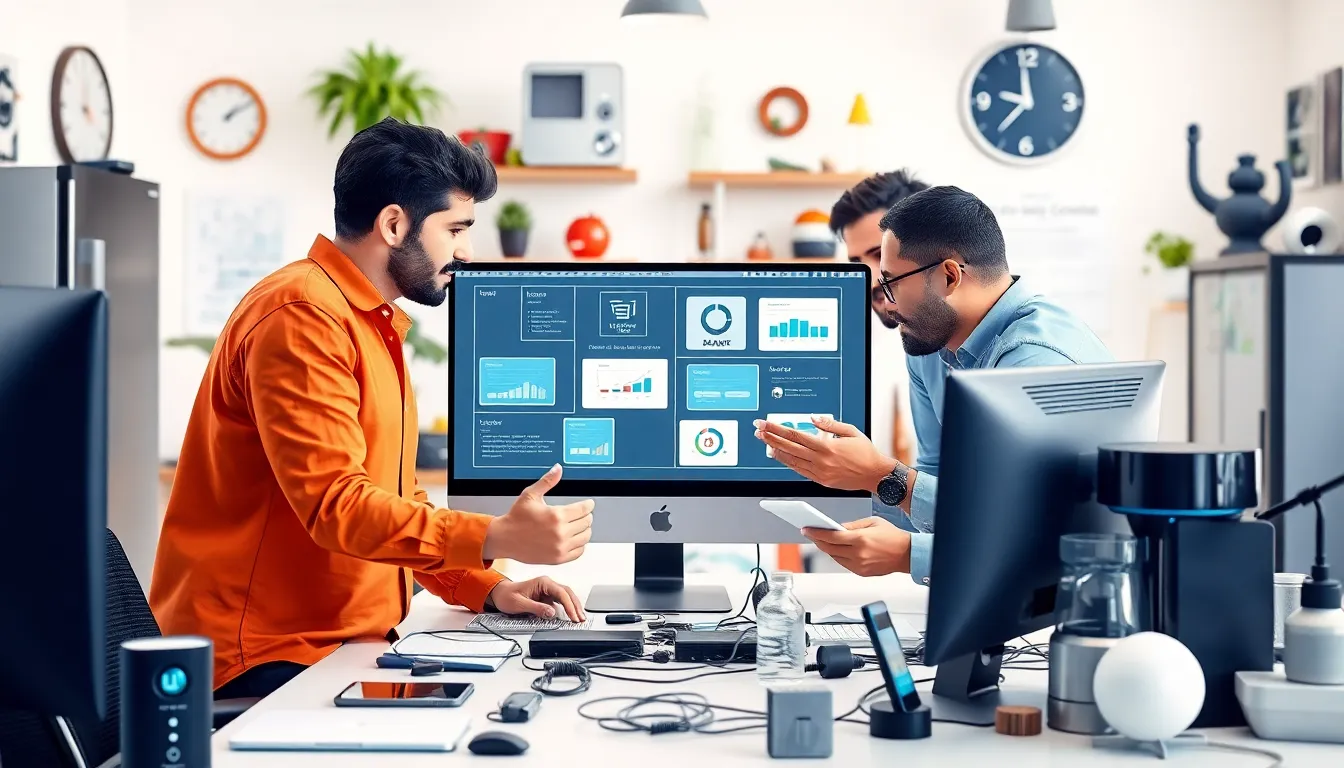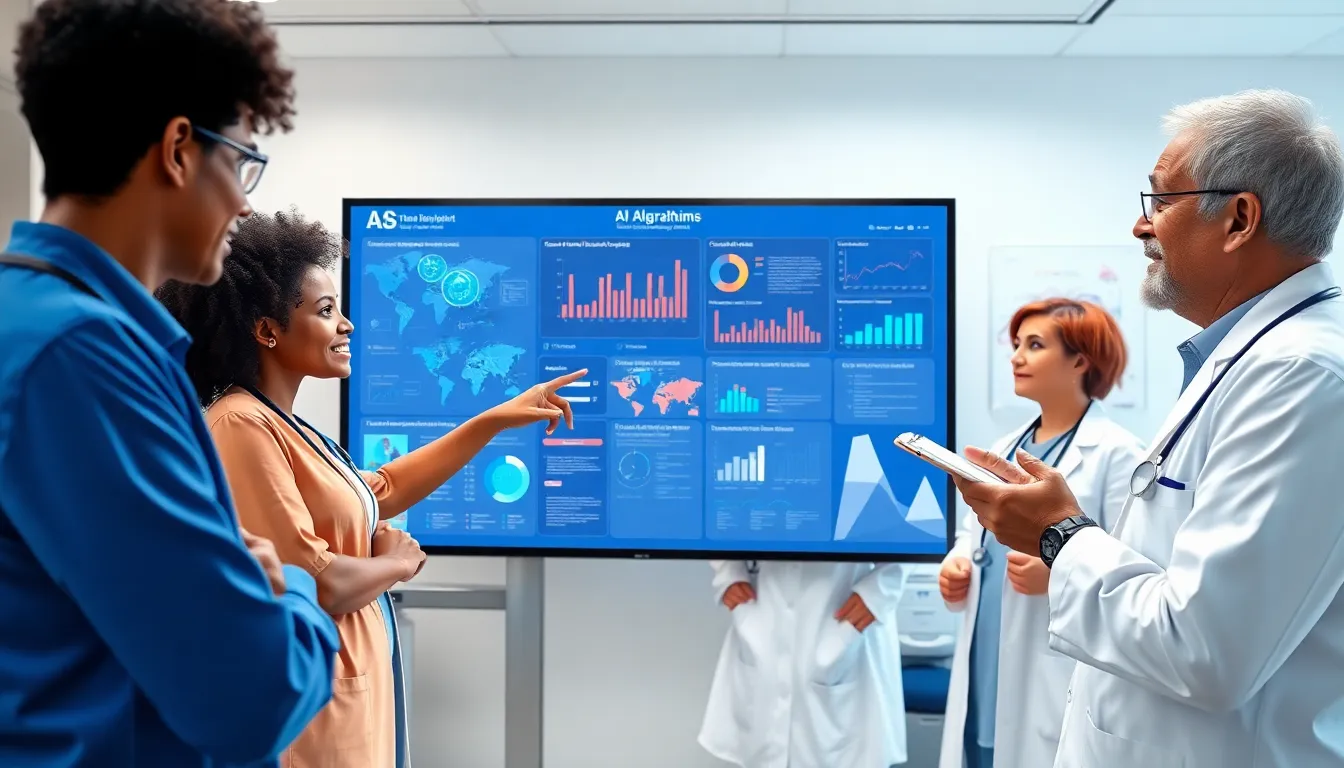In a world where your fridge can remind you to buy milk and your coffee maker knows just how you like your brew, the Internet of Things (IoT) is not just a buzzword—it’s a lifestyle. As devices become smarter and more interconnected, the demand for innovative IoT software development is skyrocketing. Who wouldn’t want their toaster to join the Wi-Fi revolution?
Table of Contents
ToggleOverview of Internet of Things Software Development
Internet of Things (IoT) software development focuses on creating applications that ensure seamless communication between various smart devices. These applications utilize a range of programming languages, frameworks, and tools tailored for specific functions and platforms. Effective IoT software must handle vast amounts of data efficiently from interconnected devices.
Protocols such as MQTT and HTTP serve as the backbone for data transmission. Robust architecture addresses scalability and security concerns, allowing devices to expand without compromising user safety. Development teams prioritize user experience when designing interfaces for IoT products, ensuring that navigation remains intuitive.
The growing trend of edge computing enhances the performance of IoT systems. By processing data closer to the devices, latency decreases significantly, providing real-time insights. Developing software that can run on various hardware platforms presents unique challenges, requiring adaptability and flexibility from developers.
Testing and quality assurance play critical roles in IoT software development. Ensuring reliability across multiple devices requires comprehensive testing strategies, including automated testing and user feedback loops. Developers also integrate Machine Learning and Artificial Intelligence techniques to improve the functionality of IoT applications, enabling smart decision-making processes based on collected data.
As smart devices become increasingly ubiquitous, the demand for IoT software development continues to grow. Companies invest in innovative solutions to enhance convenience and efficiency, making the development of reliable and secure IoT applications a key focus area for the tech industry.
Key Components of IoT Software Development

IoT software development relies on essential components that ensure functionality and effectiveness. Critical elements include hardware, sensors, and communication protocols.
Hardware and Sensors
Hardware constitutes the physical devices in the IoT ecosystem. Smart devices like thermostats, cameras, and wearables rely on sensors for data collection. Sensors monitor environmental conditions, detect motion, or measure temperature. Integration of various hardware components determines overall performance and usability of an IoT application. Selection varies based on project requirements. Environmental sensors serve specific use cases, while smart appliances utilize different hardware. This diversity fosters innovation in IoT applications.
Connectivity and Communication Protocols
Connectivity facilitates seamless communication between devices. Protocols like MQTT and HTTP ensure data transmission across networks. Each protocol serves unique needs, with MQTT favoring lightweight communication ideal for low-bandwidth situations. HTTP, on the other hand, suits applications requiring consistent connections. Choosing the right protocol impacts response times and data efficiency. Robust connectivity relies on reliable infrastructure, such as cellular, Wi-Fi, or Bluetooth technologies. A combination of these protocols enhances overall system reliability, promoting a cohesive IoT ecosystem.
Development Frameworks and Tools
Development frameworks and tools play a crucial role in IoT software development, enabling the creation and management of interconnected devices. Various platforms and programming languages cater to distinct project requirements, facilitating innovation in the IoT space.
Popular IoT Platforms
Several popular IoT platforms provide comprehensive solutions for developers. Microsoft Azure IoT offers robust cloud capabilities for connecting, monitoring, and managing devices. Amazon Web Services (AWS) IoT facilitates secure data exchange and device management while providing analytics features. Google Cloud IoT provides integration with its AI tools, enhancing data analysis. These platforms support scalability and simplify the complexities of developing IoT applications, allowing developers to focus on functionality and user experience.
Programming Languages for IoT
Different programming languages serve unique purposes in IoT development. Python is favored for its simplicity and vast libraries, making it ideal for rapid prototyping. Java, known for its portability, enhances cross-device communication in IoT systems. C and C++ offer low-level programming advantages, providing access to hardware features and optimizing performance. JavaScript appears in web-based applications, aiding in the development of user interfaces for IoT devices. The choice of language significantly impacts application performance and resource utilization in the IoT ecosystem.
Challenges in IoT Software Development
IoT software development faces multiple challenges that can impact functionality and effectiveness.
Security Concerns
Security concerns dominate the IoT landscape. Many devices collect sensitive data, creating vulnerabilities that hackers may exploit. Lack of proper encryption increases the risk of unauthorized access, posing threats to user privacy and safety. Additionally, outdated software presents another avenue for breaches, making regular updates crucial in maintaining device integrity. Developers must prioritize security protocols such as Transport Layer Security (TLS) and implement secure authentication methods, ensuring data protection and safeguarding against cyberattacks. Adapting security measures to evolving threats enhances resilience across the IoT ecosystem, ultimately building consumer trust.
Scalability Issues
Scalability issues challenge IoT software development as the number of connected devices grows. Increased data traffic strains communication channels, affecting performance and response times. Developers must design applications capable of handling large amounts of data from various sources, ensuring the architecture supports expansion. Effective data management strategies, like utilizing cloud services, can help accommodate increasing loads while optimizing resource utilization. Maintaining system responsiveness as user demand fluctuates requires careful planning and robust infrastructure. Addressing scalability ensures the IoT network remains efficient as it expands, allowing continued innovation and integration of new devices.
Future Trends in IoT Software Development
Emerging trends in IoT software development highlight the growing importance of artificial intelligence and machine learning for enhancing smart device functionality. Utilizing AI helps devices learn from user behavior and adapt accordingly, enabling predictive analytics and improved user experiences.
Additionally, the integration of advanced analytics plays a crucial role in extracting insights from the massive data generated by IoT devices. Analyzing this data supports informed decision-making and boosts operational efficiency across various industries, especially in agriculture and healthcare.
The rise of 5G technology significantly impacts IoT software development by providing higher speeds and lower latencies. This technology allows for faster data transmission, supporting a new wave of IoT applications that necessitate real-time processing and immediate feedback.
Edge computing continues to shape the landscape by allowing data processing closer to the source. Devices can respond quickly to events while reducing bandwidth usage, creating more efficient systems in smart cities and industrial environments.
Interoperability remains a critical focus as diverse devices from different manufacturers need to communicate seamlessly. Developers prioritize creating standardized protocols to ease integration challenges and ensure a cohesive ecosystem.
Furthermore, improved security measures are a growing necessity as the number of connected devices escalates. Implementing end-to-end encryption and robust authentication protocols safeguards sensitive data against potential threats.
Emphasis on sustainable development is increasingly relevant within IoT projects. Businesses strive to design reliable solutions while minimizing environmental impact, aligning with global sustainability goals.
Staying updated with these trends in IoT software development enables stakeholders to anticipate future demands effectively. Developers and organizations can position themselves to leverage new opportunities as the IoT landscape continues to evolve rapidly.
The future of IoT software development is bright and full of potential. As smart devices continue to proliferate in everyday life, the demand for innovative solutions will only grow. Developers must remain agile and responsive to emerging trends like AI, machine learning, and edge computing to create applications that enhance user experiences.
Security and scalability will remain critical challenges as the number of connected devices increases. Prioritizing robust security measures and efficient data management strategies will be essential for maintaining user trust and system performance.
By embracing these advancements and focusing on sustainable practices, developers can contribute to a more interconnected and efficient world. The ongoing evolution of IoT software development promises exciting opportunities for innovation and growth in various industries.





